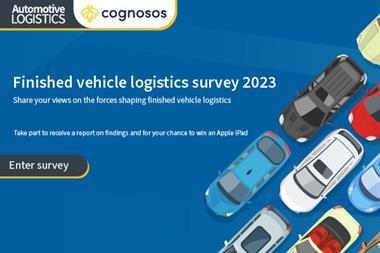Whitepaper: The ROI Alignment Advantage: Improving FVL Efficiency and Profitability
By Automotive Logistics and Cognosos, sponsor partner2023-05-23T09:27:00
When Vehicles are located more quickly and accurately, cost and inefficiencies decrease and the benefits affect the entire FVL supply chain: OEMs, Vehicle transportation companies, dealerships, and ultimately, customers benefit.
The downstream finished vehicle supply chain can be characterized by a single word: interdependencies.
Each link in the chain is striving to drive down its costs and maximize its profits—but is often held back by the actions of adjacent links, both upstream and downstream. What kind of counterproductive interdependencies are we talking about exactly?
For instance, relocating vehicles multiple times within vehicle processing centers’ yards increases the risk of damage, consumes fuel (while also raising the carbon footprint), and increases driver workload. Sometimes those multiple movements are triggered for internal reasons—but often, they’re down to decisions by the vehicle manufacturer regarding accessorization, dealer shipments, or individual market customization
The finished vehicle supply chain has a significant opportunity to achieve a transformative step change in operational performance and cost reduction. And that opportunity arises through recent technological advances in real-time tracking and asset location capabilities.
Topics covered include:
- Slow, costly, and inefficient: The challenges of the downstream finished vehicle supply chain
- The transformative impact of highly accurate vehicle visibility
- RTLS: The solution that delivers real-time visibility
- A shared vision ensures shared gains
- Calculating hard-dollar returns for stakeholders
Download this eBook to learn more.






































